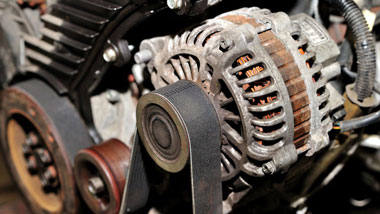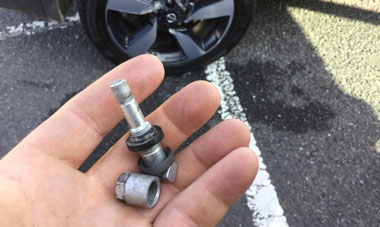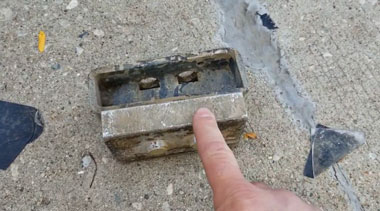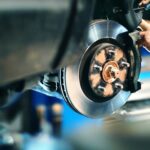
This article will walk you through the basics of Racebox tuning, its benefits, potential risks, and what you should consider before diving into this world of automotive customization.
What is Racebox Tuning?
Racebox tuning refers to the process of modifying a vehicle’s Engine Control Unit (ECU) using a specific device called a Racebox.
This device allows users to adjust various parameters that control the engine’s performance, potentially increasing power output and improving the overall driving experience.
How Does Racebox Tuning Work?
- The Racebox device connects to your vehicle’s OBD-II port
- It reads the current ECU settings
- Users can then modify these settings through the Racebox interface
- The new settings are uploaded to the ECU, changing how the engine operates
Benefits of Racebox Tuning
Increased Power Output
One of the primary reasons car enthusiasts opt for Racebox tuning is the potential for increased horsepower and torque. By optimizing fuel injection, ignition timing, and boost pressure (in turbocharged engines), Racebox tuning can unlock hidden potential in your engine.
Improved Fuel Efficiency
Contrary to what some might expect, proper Racebox tuning can actually improve fuel efficiency. By optimizing the air-fuel mixture and engine timing, your car can run more efficiently, potentially saving you money at the pump.
Customized Performance
Racebox tuning allows for a high degree of customization. You can tailor your car’s performance to your specific needs and preferences, whether you’re looking for more power, better fuel economy, or a balance of both.
Removed Speed Limiters
Some cars come with factory-imposed speed limiters. Racebox tuning can often remove these limiters, allowing for higher top speeds (where legal and safe to do so).
Potential Risks and Considerations
Warranty Concerns
Before you start Racebox tuning, be aware that it may void your vehicle’s warranty. Many manufacturers consider ECU modifications to be a reason to deny warranty claims.
Engine Stress
Improperly done Racebox tuning can put additional stress on your engine, potentially leading to premature wear or even catastrophic failure. It’s crucial to understand the limits of your engine and tune it within safe parameters.
Legal Issues
Depending on your location, certain types of ECU modifications may not be street-legal. Always check local regulations before making changes to your vehicle.
Emissions Concerns
Racebox tuning can affect your vehicle’s emissions. In some cases, this might cause your car to fail emissions tests or violate environmental regulations.
Preparing for Racebox Tuning
Research Your Vehicle
Before you start Racebox tuning, thoroughly research your specific make and model. Different vehicles respond differently to tuning, and it’s important to understand what’s possible and safe for your car.
Understand the Basics of Engine Management
Having a solid grasp of how engine management systems work will help you make informed decisions when tuning. Key concepts to understand include:

- Air-fuel ratios
- Ignition timing
- Boost pressure (for turbocharged engines)
- Knock detection and prevention
Invest in Diagnostic Tools
While the Racebox itself is a powerful tool, additional diagnostic equipment can be invaluable. Consider investing in:
- A wideband O2 sensor for accurate air-fuel ratio readings
- An OBD-II scanner for reading and clearing engine codes
- A knock detection system to prevent engine damage
Choose the Right Racebox
Not all Raceboxes are created equal. Research different models and choose one that’s compatible with your vehicle and offers the features you need. Some factors to consider include:
- Compatibility with your vehicle’s ECU
- User interface and ease of use
- Available tuning options
- Community support and available resources
Steps to Get Started with Racebox Tuning
Install the Racebox
Follow the manufacturer’s instructions carefully when installing your Racebox. Typically, this involves:
- Locating your vehicle’s OBD-II port
- Connecting the Racebox to the port
- Securing the device to prevent disconnection while driving
Read and Save Your Stock Tune
Before making any changes, always read and save your vehicle’s stock tune. This serves as a backup in case you need to revert to the original settings.
Start with Small Changes
When you begin tuning, make small, incremental changes. This allows you to observe the effects of each modification and reduces the risk of damaging your engine.
Monitor Engine Parameters
As you make changes, closely monitor key engine parameters such as:

- Air-fuel ratios
- Engine temperature
- Knock sensor activity
- Boost pressure (for turbocharged engines)
Test and Refine
After each change, thoroughly test your vehicle under various conditions. Pay attention to how it performs during acceleration, cruising, and underload. Refine your tune based on these real-world results.
Consider Professional Dyno Tuning
While Racebox tuning can be done at home, consider having your car professionally tuned on a dynamometer for optimal results and safety.
Advanced Racebox Tuning Techniques
Custom Mapping
As you become more experienced with Racebox tuning, you may want to create custom maps for different conditions or purposes. This might include:
- A daily driving map for optimal fuel efficiency
- A high-performance map for track days
- A towing map for increased low-end torque
Datalogging and Analysis
Many Racebox devices offer data logging capabilities. Learning to interpret this data can help you fine-tune your vehicle’s performance and identify potential issues.
Integrating with Other Modifications
If you’ve made other modifications to your vehicle (such as a cold air intake or exhaust system), Racebox tuning can help you fully realize the benefits of these upgrades.
Common Mistakes to Avoid in Racebox Tuning
Overly Aggressive Tuning
One of the most common mistakes is trying to extract too much power too quickly. This can lead to engine damage or unreliable performance.
Ignoring Knock Detection
Engine knock can cause serious damage. Always pay attention to knock sensor readings and adjust your tune to prevent detonation.
Neglecting Air-Fuel Ratios
Proper air-fuel ratios are crucial for both performance and engine longevity. Don’t sacrifice engine health for a small power gain.
Forgetting to Account for Fuel Quality
Different regions have varying fuel quality. Your tune should account for the octane rating of the fuel you typically use.
Not Updating Tunes for Seasonal Changes
Temperature and humidity can affect engine performance. Consider creating separate tunes for summer and winter conditions.
The Future of Racebox Tuning
As automotive technology continues to advance, so does the world of Racebox tuning. Some trends to watch for include:
Integration with Smartphone Apps
Many newer Racebox devices offer smartphone integration, allowing for easier tuning and monitoring.
Machine Learning and AI
Some companies are exploring the use of artificial intelligence to optimize tunes based on driving habits and conditions.
Increased Focus on Emissions Compliance
As emissions regulations tighten, expect to see more emphasis on tuning methods that maintain or improve emissions performance.
Conclusion
Racebox tuning offers exciting possibilities for car enthusiasts looking to optimize their vehicle’s performance. However, it’s not a decision to be taken lightly. Proper research, careful implementation, and ongoing monitoring are key to successful and safe Racebox tuning.
Remember, the goal of Racebox tuning isn’t just about maximizing power—it’s about creating a vehicle that performs exactly how you want it to, whether that’s increased efficiency for daily driving or enhanced performance for track days.
As with any form of vehicle modification, always prioritize safety and legality. If you’re unsure about any aspect of Racebox tuning, don’t hesitate to consult with professionals or experienced enthusiasts.






































